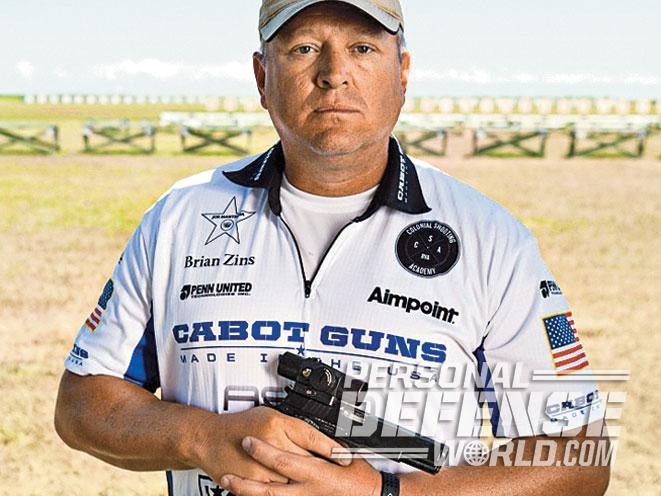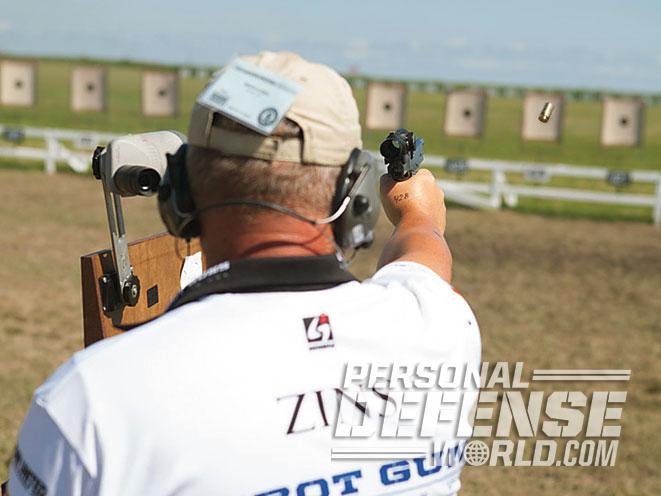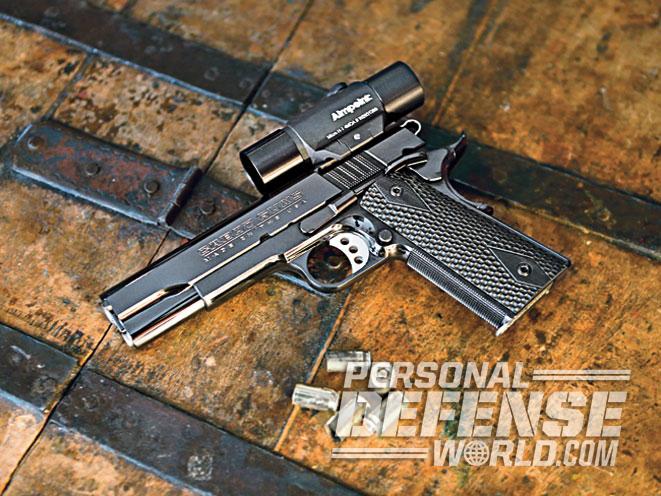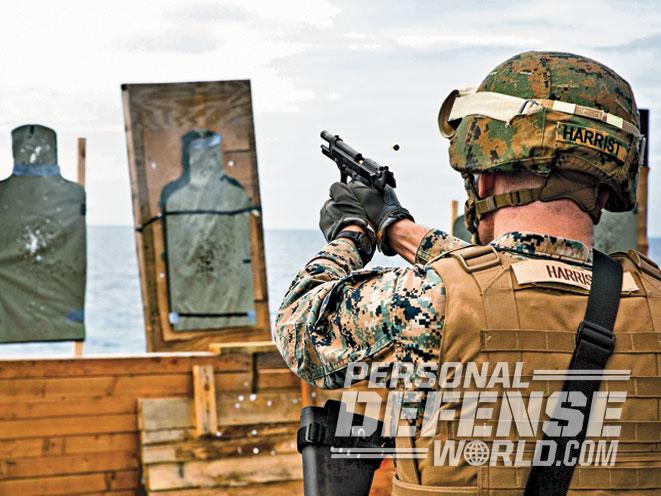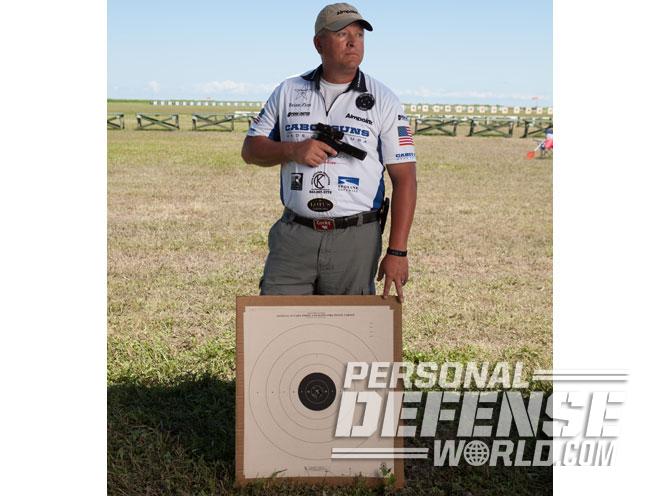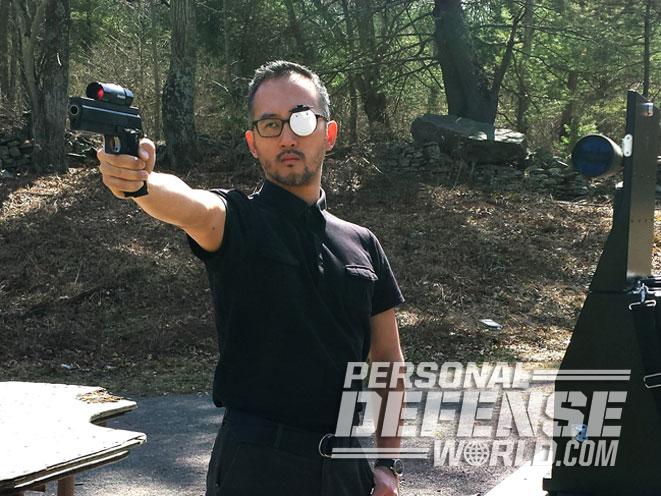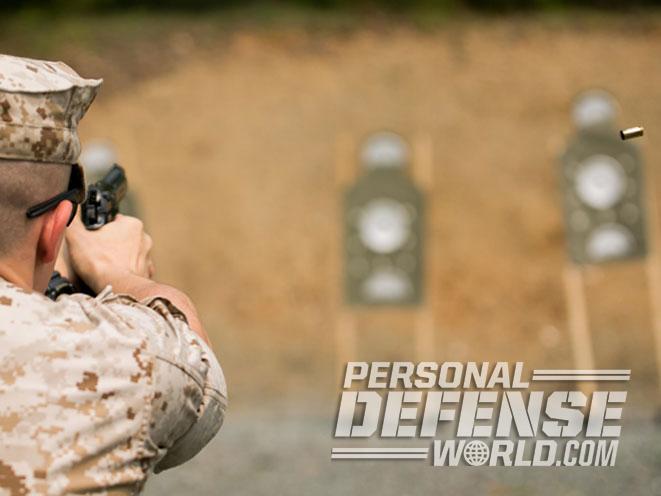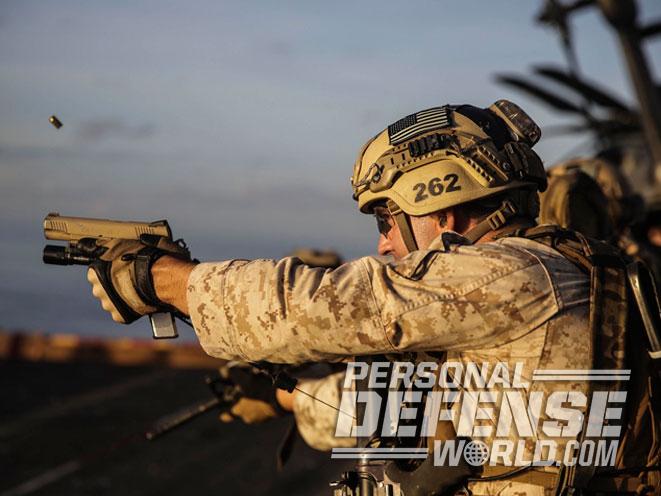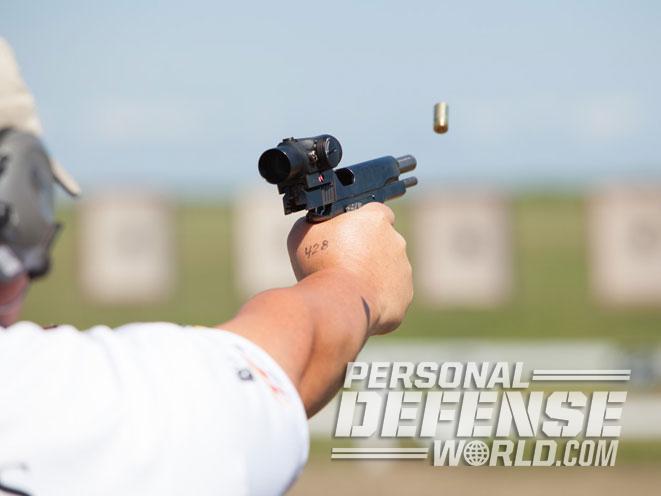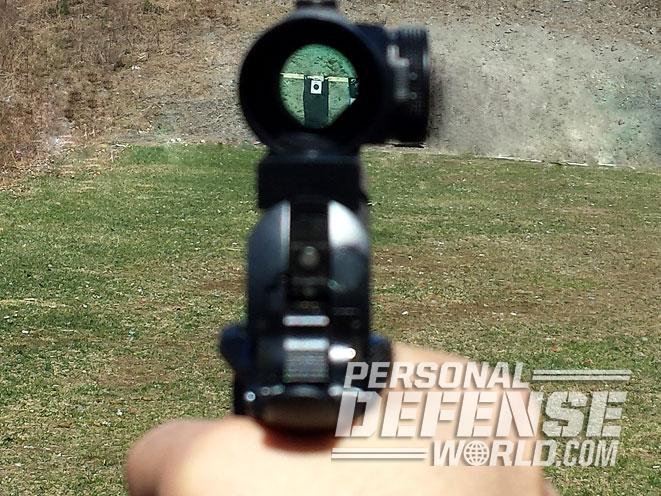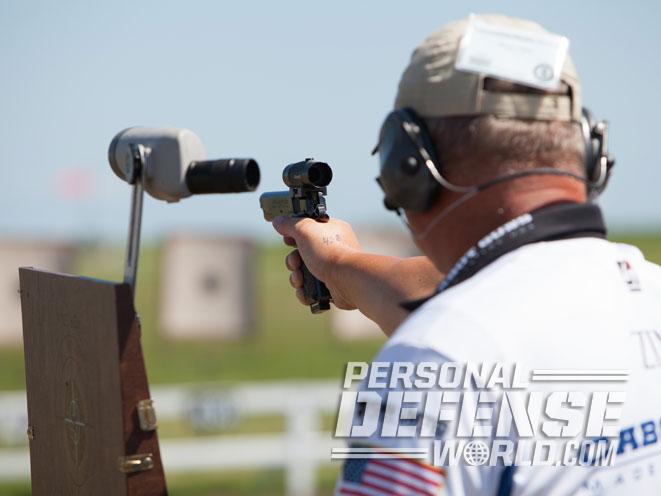Bullseye is a precision discipline, targeting a 3-inch dot from 50 yards (150 feet) while firing .45 ACP rounds and holding the 1911 with one hand. The military undeniably prioritizes accuracy in a winning strategy and uses the sport of Bullseye as a training vehicle for its very best warriors. Yet, if you trawl Instagram it seems many of us are happy just hitting the paper on a giant Q-type silhouette from 15 feet, smiling next to the zombie that looks like a 12-gauge birdshot went off on it.
Most handgun shooters have never witnessed the accuracy applied by the likes of Brian Zins. Several years ago, I had the honor of training under Zins and Andy Moody, both men of legend and lore in the Marine Corps and Bullseye competition. At the firing line, I was thrilled to show off my new custom 1911, similar to what Zins shot and won with at the nationals a couple years before.
After a brief inspection, Zins picked up my 1911, raised it off-hand to the short-line target at 25 yards (75 feet) and released five rounds in about five seconds. Looking through my spotting scope, I saw a raggedy little hole, barely 2 inches wide, straddling the 10 and X rings. “It shoots,” he complimented with a smirk, but considering my gun groups .45 ACP ammo around 1 inch at 50 yards, it wasn’t the gun: That was all him.
Advertisement — Continue Reading Below
BullSEYE Master

Brian Zins is arguably one of the greatest living precision handgun operators. With an unprecedented 12 wins at the NRA’s National Pistol Championships, he has also helped redefine the Marine Corps’ Marksmanship Program while serving a distinguished 20-year career as a gunnery sergeant. In addition, his roles in the Marine Corps have included military police and the hostage rescue team. He’s run security against pirates off the coast of Somalia, and you’ve probably seen him as the finalist on the History Channel’s Top Shot series. In the world of combat and personal defense, Zins may not be the obvious choice for “run-and-gunners,” but I called upon him knowing his insights would be unparalleled for what we’re talking about today.
RELATED STORY: 5 Amazing Races in Competitive Shooting
Advertisement — Continue Reading Below
“A lot of people don’t understand that good Bullseye shooters make great action shooters, but not vice versa. The precision from Bullseye allows you to apply and adjust to any kind of action/IDPA/combat situation,” Zins noted, setting up motion language that’s surely debatable yet actually finds little resistance in the action community. “Listen to an action match,” he continued, “as they move from one shooting position to another. When they start shooting at targets 30 yards or more, everything slows down. You can hear them slowly trying to drag out the fundamentals.”
Fundamental Accuracy

The query here isn’t what’s different from an organized Bullseye match versus when zombies are scampering down the street after you. Rather, it’s what’s the same: shooting fundamentals.
Advertisement — Continue Reading Below
RELATED STORY: Hit What You Aim At – 4 Fundamental Marksmanship Tips
“Discipline over the fundamentals is what’s developed in Bullseye,” Zins highlighted. Whether using a dot or iron sights, revolver or semi-auto, double-action or single-action-only, Zins was adamant such readily argued distractions aren’t what’s important to the fundamentals in any type of shooting. The discipline is to maintain the importance of fundamentals above all other focuses in training. The following list of fundamentals is fortunately, and unfortunately, a short one.
1. The Grip: The grip has to be consistent. There are multitudes of variations on grips. I’ve personally learned from Gunnery Sgt. Andy Moody that for Bullseye, it’s the natural grip that occurs when you reach down for your 1911 holstered off of your hip. But that’s not the point. The grip is the foundation for the trigger finger. If you can’t find a way to consistently hold your gun, it will be hard to find a way to consistently pull the trigger. Find the grip that works for you. Use that grip every time.
Advertisement — Continue Reading Below

2. Sight Alignment: High Masters like Zins can probably write an entire book about this. It consists of matters like sight picture, center mass or sub-six hold, front sight focus, theories on “natural point of aim,” and red-dot versus iron sights. But for our purposes herein, sight alignment is finding an aiming process that lines up your eyes, your sighting mechanism (dot/iron) and your target.
Distilled to its essence, Zins’ theories on this are as follows. When using iron sights focus on the front sight, but when using a dot focus on the target. These are no small complications and are argued by the best shooters, Bullseye or combat. But no matter what school you may subscribe to in sight alignment methodology, Zins’ focus on this fundamental remains salient: Use a way that lines up you, your gun and your target every single time.
RELATED STORY: 6 Items in Champion Shooter Doug Koenig’s Range Bag
Advertisement — Continue Reading Below
3. Trigger Control: The idea of trigger control is, for most, the simplest to consider and the most difficult to execute. It is to be able to pull the trigger without disturbing the sights. But we should pause to consider what trigger control is really about. Let’s circumvent for the moment nuances like trigger finger placement and how different handgun triggers break.
Here’s the catch—one that Zins laments. Every time you pull the trigger, your sights will move. Go ahead, see if you can do it. It’s nearly impossible, even with the best grip and steady nerves. Your trigger finger squeezing back will force movement in other muscles in your hand, altering your perfect sight picture.
The keystone to Zins’ ultimate mastery of this fundamental is he starts pulling his trigger before he has a perfect sight picture. Yes, he actually starts shooting before he’s on target, knowing that by the time the gun goes bang, he’ll be dead on.
Advertisement — Continue Reading Below
All Together
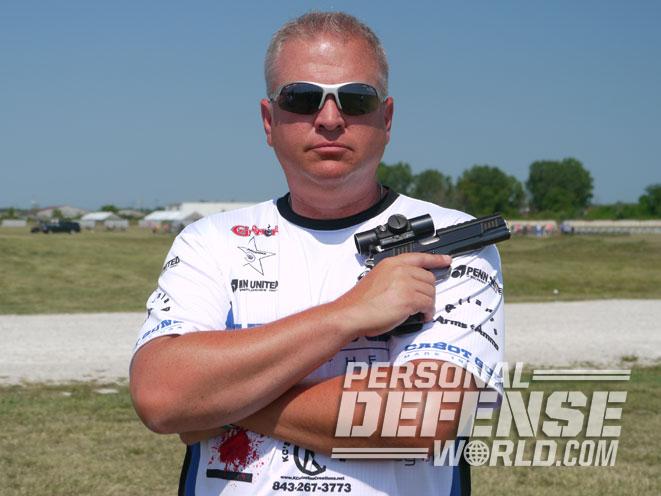
When I asked Zins for a drill to put all these fundamentals together, he started laughing, “You aren’t going to like it. It’s not very sexy.”
Advertisement — Continue Reading Below
I took a guess, “Dry fire?”
“People don’t appreciate dry-fire until they become good, really good,” Zins said. “It doesn’t matter what you shoot, Bullseye or action, dry firing is how you’re going to get better.”
RELATED STORY: Action Shooting 101 – Getting Involved In Action Shooting Matches
Advertisement — Continue Reading Below
Zins estimates that for every bullet he releases downrange, he has dry-fired at least five times. “It’s really hard to see what happens at the time of explosion [flash, noise, recoil].” Dry-fire training allows one to work on fundamentals in a controlled manner.
Dry fire is also part of training one’s shot process—the things you do every time before pulling the trigger. For example, law enforcement agents’ dry-fire training processes may involve drawing from a holster. “In a gunfight, most cops will never see their sights,” Zins noted. “If you dry-fire enough, you don’t need to see the sights to hit your target on the other side of the room. You will be looking at the bad guy. If you’ve trained for it, you may even be shooting off your hip.”
To get started with your dry-fire practice, clear that gun, find a safe wall, and aim at a tiny little dot.
For more info on Brian Zins, visit http://www.brianzins.com.
